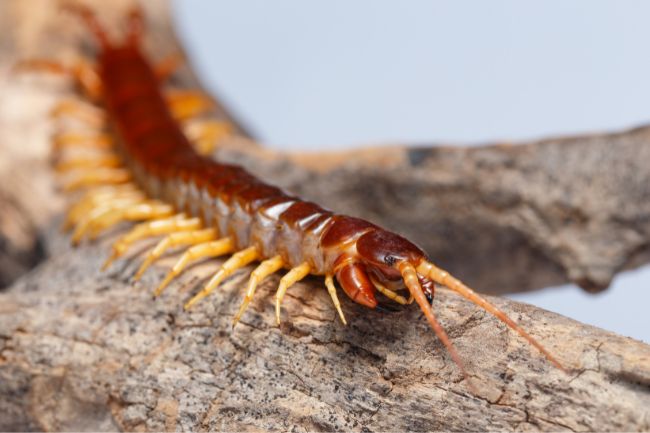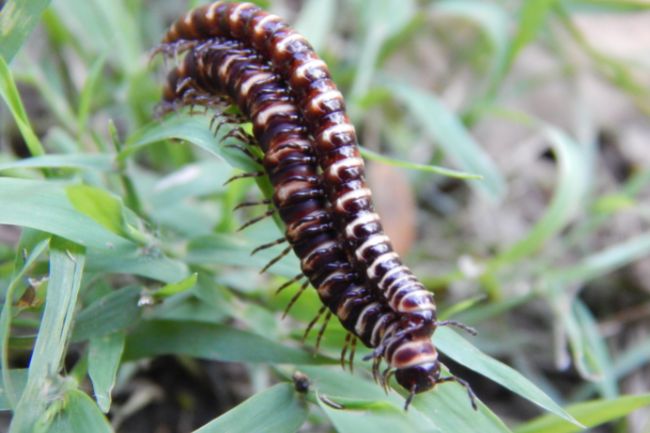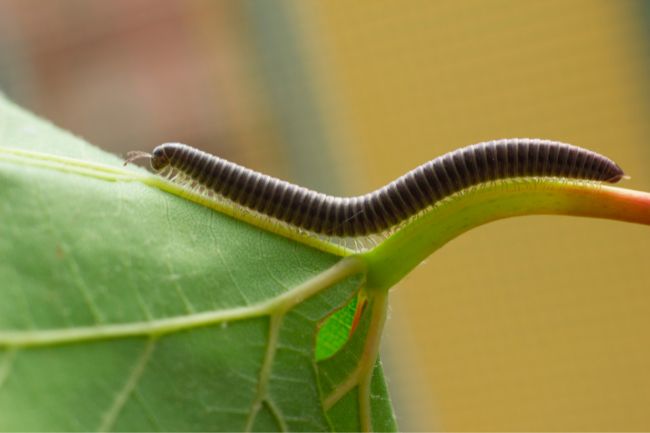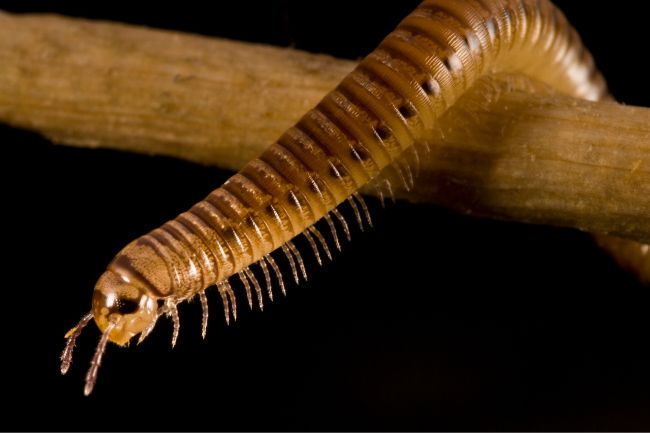Centipedes can live roughly one to six years, depending on the species and lifestyle. Centipedes kept in captivity are likely to live longer than wild animals.
Contents
Centipedes

Centipedes are best known for their many legs, which can number between 10 and 300. They are often confused with millipedes, who also have long bodies and many legs. The key difference is that millipedes have two pairs of legs per body segment, whereas centipedes have only one pair.
Table 1: Life Spans of Common Centipede Species
| Centipede Species | Life Span |
|---|---|
| House Centipede | 1-3 years |
| Giant Desert Centipede | Up to 5 years |
| Stone Centipede | 3-5 years |
| Jungle Centipede | 4-7 years |
| Vietnamese Centipede | 5-7 years |
| Amazonian Giant Centipede | 7-10 years |
| Bark Centipede | 2-4 years |
There are around 3,300 species of centipede globally, though it’s thought 8,000 may exist. These range from the tiny house centipede to the Amazonian giant centipede. They are found across every continent aside from Antarctica.
Also read: Millipedes and Centipedes – The Difference Explained
A centipede’s life cycle
Due to the large number of centipede species that live across the world, and the wide range of habitats they live in, there is a great deal of variability in centipede lifestyles. However, we can make some generalizations about what a centipede’s annual life cycle may look like.
Also read: Centipedes in Winter: What Happens With Them? Do They Like it?
Mating

Centipedes are largely solitary creatures, most species only coming together to mate. Mating in usually takes place in the spring or summer, when individuals have reached sexual maturity.
Like many insects, centipede can use pheromones to attract a mate. These are chemicals released by special glands in the animal’s body.
To detect these chemical signals, centipedes use their most important sensory organs, their antennae. The antennae have a large number of chemosensors across their surface, that detect the presence of particular chemicals, and send signals to the centipede’s brain.
Having detected the chemical signals of a female, male centipedes will get ready to mate by weaving her a silken present. This package contains his sperm and is known as a spermatophore.
| Factors | Influence |
|---|---|
| Species | Different species of centipedes have varying life spans. |
| Environmental Conditions | Centipede life span can be influenced by factors such as temperature, humidity, availability of food, and habitat quality. |
| Predators | Predation pressure can impact the life span of centipedes. Species with fewer natural predators may have longer life spans. |
| Reproduction | After mating and producing offspring, centipedes may have shorter life spans as their energy is devoted to reproduction. |
| Health and Immunity | Centipedes with robust immune systems and good health are likely to have longer life spans. Injuries or diseases can shorten their lifespan. |
| Seasonal Variations | Some centipede species exhibit seasonal variations in life span, with shorter life spans during colder months. |
Most males will simply leave the package in a prominent place for the female to collect, but some will call her attention to it with a courtship dance. This dance usually consists of him taping her back and legs with his antennae.
Once the female has the package, she will use it to fertilize her eggs. The male will continue on his way, looking for more females to impregnate, while the female prepares for motherhood.
Also read: Wondering if “Millipedes have Antennae?” (Sensory Organ)
Birth

Centipedes are unusual among what we think of as ‘mini beasts’, in that the mothers are surprisingly maternal. While some do abandon their eggs once they’ve been laid, many centipede mothers spend their time curled around their eggs, protecting and caring for them.
Centipedes usually lay batches of eggs, an average of around 60 at a time, within the soil. Once laid, the eggs are at risk of being discovered and eaten or succumbing to moulds. The centipede mother, therefore, spends her time guarding and cleaning her eggs.
Once the nymphs, or stadia, have hatched from their eggs, their mother will often leave them to their own devices. Some females will stay with their young, however, usually until their first moult.
The young centipedes usually look like smaller versions of the adults, generally with fewer legs and body segments. As they grow, more legs and segments are added each time they moult their exoskeleton.
Moulting is an important process, as they cannot grow larger due to their hard external shell. Squeezing their way out of this allows them to expand into a new soft skin, that slowly hardens.
In time, they will grow into their adult forms, including reaching sexual maturity.
Adult life

Adult life is much like a centipede’s juvenile life, and they spend much of their time in a solitary existence, searching for food, and avoiding predators.
Centipedes are carnivores and extremely well-adapted hunters. They move swiftly through leaf litter, crevices or underground, looking for prey. Once they locate it, they will often use a pair of specially adapted front legs to grasp hold of their victim and inject them with venom, leading to paralysis or death.
And of course, as adults, they find time for a little romance, searching out a mate to help bring about the next generation of many-legged predators.
Also read: Centipedes at Night: What Do They Do & Why Do They Prefer it!
How long do centipedes live?
How long centipedes live depends a great deal on the species, however, a rough guide would be between one and six years. The house centipede is one species that has been found to live between five and six years.
| Geographic Region | Typical Centipede Life Span |
|---|---|
| North America | Varies by species, ranging from 1 to 7 years |
| Europe | Varies by species, ranging from 1 to 5 years |
| Asia | Varies by species, ranging from 2 to 10 years |
| Australia | Varies by species, ranging from 3 to 8 years |
| South America | Varies by species, ranging from 2 to 6 years |
| Africa | Varies by species, ranging from 2 to 7 years |
| Antarctica | Limited centipede species, life spans unknown |
Of course, whether they get to live such a long and interesting life depends a great deal on what happens to them in between. They have to be tough and adaptable to both get enough food to sustain them, and not become dinner themselves. Yet, given that centipedes have roamed this world since before the days of the dinosaurs, they certainly seem to know what they are doing.

